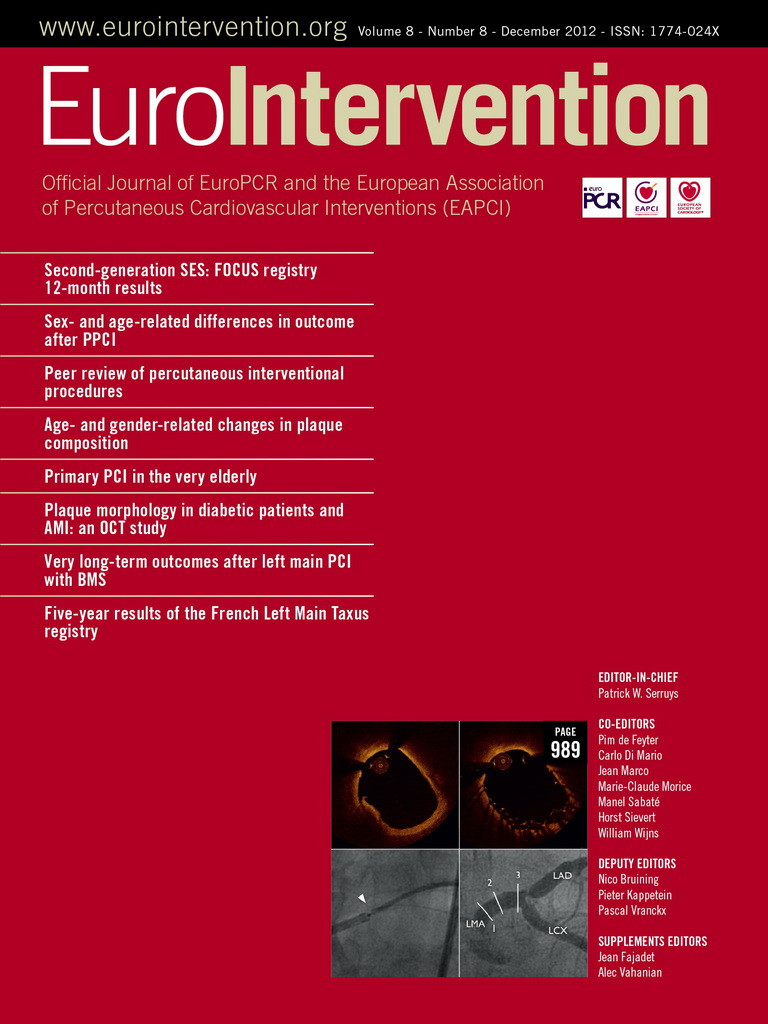As you read these words our old year will have ended; in addition, this final 2012 edition of EuroIntervention is being released after GulfPCR is over and before AsiaPCR begins. With this symbolic crossing of the continents, we cross over as well into 2013.
I believe 2013 will see us increasingly becoming a part of globalisation, a fact we speak of quite often, and which has an impact not only within our field of percutaneous intervention, but also economically and culturally as well. Quicker, cheaper forms of transportation along with the ceaseless development of the global telecommunications infrastructure –namely the Internet– are already integral parts of our daily lives. In a sense they have become the very cement, ethereal and digital though they may be, that holds us together. Within these dynamic and rapid-paced developments we constantly question ourselves about the specific role of the EAPCI, our association: where does it find itself, and where does it choose to stand in this general movement of globalisation?
The world, our common arena
The role of the EAPCI is not only to be open-minded, but truly to be open and welcoming to the rest of the world, in short, not to function as a closed shop strictly for Europeans. While we share with our colleagues worldwide the same knowledge and many of the same concerns, our differences are best seen in the way we approach and organise our education, our commitment to innovation and our organisation of patient care. It is here, in these three realms of education, innovation and patient care that our ability as an association to promote an international dialogue based on trust and openness are essential, and it is something that we are deeply committed to.
Education is one, if not the most important pillar of our association. One may philosophise that education is the sum of experience and knowledge, and that knowledge, as we stated above, is universal. To demonstrate this is simple: for example, the primary endpoints of trials are the same whether they take place in Europe, the US or Asia. The results of these trials then lead to the formulation of guidelines or principles of good practice. The difference is seen in the integration of the guidelines, which need to become adapted to other regions and cultures. The question is how to apply and adapt the evidence gained into an integrated standpoint to both act as a counterpoint as well as supporting local differences.
The foundation of international education
A good example of this process can be witnessed at the PCR family meetings – GulfPCR and AsiaPCR meetings. Although these meetings are not affiliated with EAPCI (our association does have our own official meetings – EuroPCR in Paris – and we endorse PCR London Valves), they are invaluable for our education programmes within the association. This can be best illustrated by the following example: some members of EAPCI are involved with the local partners as Course Directors or Program Committees members in the construction and planning of the GulfPCR and AsiaPCR meetings. This is advantageous for the EAPCI since our association takes into account what the members have learnt during these local meetings. Through our ability to listen, by encouraging a great degree of interactivity, we can take advantage of our members exposure to the high level of quality education at these meetings and reflecting on all these aspects, bring back their experiences to the EAPCI where they can be integrated into our work.
For fear of stating the obvious, one of the lessons we have learnt in the last years from the GulfPCR and AsiaPCR is that it is important that we do not deliver clichéd messages coming from the top down to the participants since, quite frankly, this is a condescending and arrogant approach which hinders communication and stifles the successful transference of knowledge, techniques and information. In fact, the most respectful and successful manner in teaching is to approach education with humility and modesty –shared experience is the best teacher. Our members witness at these meetings the strong and vibrant educational aspects, and by sharing the fruits of these observations with the EAPCI we attempt to translate true needs to our members. Our association believes that one of the best vehicles to increase the reciprocal value of education is the specialised meeting organised as a course, with its emphasis on attentive listening to the local situation, and therefore understanding it. And when both sides understand, then the team concept comes into play, a team of regional and European experts joining together to achieve a common objective.
This is the role of the EAPCI: to listen, to learn and to understand, and through this provide the best education possible with our regional experts –our partners– always maintaining a modest and amiable demeanour. This is the basis for true interchange, and this is what we practiced and refined in 2012. In 2013 we will see the EAPCI further evolve, steadily increasing –together with you– the success of EuroPCR but also involvement with China (CIT 2013), India (NIC, CSI) and South America (SOLACI 2013).

